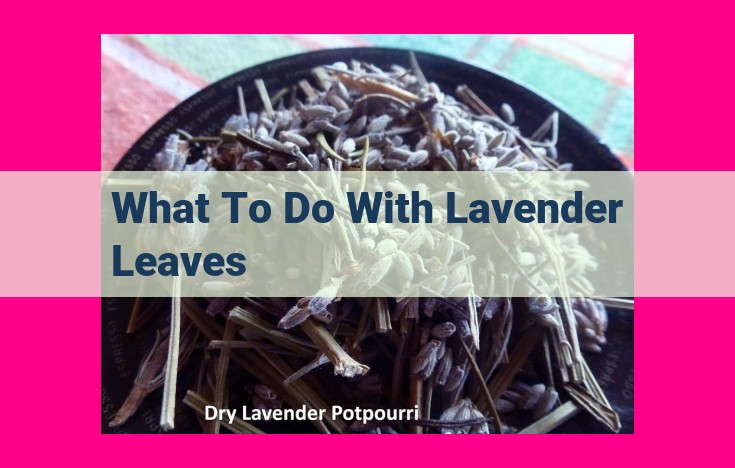Winter Care And Appearance Of Hydrangeas: A Comprehensive Guide

In winter, hydrangeas exhibit a distinct appearance with dormant stems, exfoliating bark, and flower buds concealed within leaf scales. Dried flower heads may remain, adding visual interest. Environmental factors, such as winter weather conditions, influence the appearance and health of hydrangeas. Horticultural practices like pruning, mulching, and selecting appropriate hardiness zones are crucial for winter care. Despite being dormant, hydrangeas can still contribute to winter landscapes with their decorative stems and dried flower heads, providing contrast and aesthetic appeal.
Unveiling the Enigmatic Beauty of Hydrangeas in Winter
As the summer’s vibrant tapestry fades into winter’s embrace, hydrangeas, renowned for their showy blooms, transform into a captivating sight to behold. Their dormant stems, standing tall amidst the snow-laden landscape, whisper tales of resilience and inner beauty.
The woody stems of hydrangeas, etched with the intricate patterns of exfoliating bark, resemble ancient scrolls holding secrets from seasons past. Beneath their protective mantle lie the promise of spring’s rebirth, hidden within leaf scales that cradle the flower buds. These buds, like tiny gems, hold the potential for a riot of colors when the warmer days return.
Gracing the ends of some branches, dried flower heads stand as vestiges of summer’s grandeur. Their delicate hues, now muted by the passage of time, lend an ethereal charm to the winter garden. These remnants of past glory serve as a poignant reminder of the cyclical nature of life, the ebb and flow of beauty across the seasons.
The structural characteristics of hydrangeas in winter reveal the plant’s remarkable adaptation to the harshness of the cold months. Dormant stems, protected by exfoliating bark, ensure survival during the onslaught of freezing temperatures. Hidden flower buds and dried flower heads bear witness to the cycle of life and renewal, providing a quiet beauty that transcends the season’s frosty embrace.
Environmental Factors that Shape the Winter Beauty of Hydrangeas
As the autumn leaves surrender to the embrace of winter’s icy breath, hydrangeas unveil a hidden charm, transforming into architectural marvels that grace the barren landscape. Understanding the environmental factors that influence their winter appearance is crucial for cultivating their unique beauty.
The Chilly Grip: Winter Temperatures
- Impact on Dormancy: Cold temperatures signal the commencement of dormancy for hydrangeas, causing them to shed their leaves and enter a resting phase.
- Hardiness Zones: Different hydrangea species possess varying degrees of cold tolerance, classified into hardiness zones. Choosing varieties suitable for your region ensures their survival and winter resilience.
- Protecting Buds: Flower buds, encased within leaf scales, are vulnerable to extreme cold. Sub-freezing temperatures can damage these buds, affecting the next season’s blooms.
Nature’s Blanket: Winter Precipitation
- Snowfall’s Insulation: Snowy winters provide a protective blanket for dormant hydrangeas, shielding them from harsh winds and fluctuating temperatures.
- Ice Storm Hazards: Heavy ice accumulation on branches can weigh them down and cause breakage. Regular snow removal is essential to prevent damage.
- Rainfall’s Hydration: Winter rain replenishes the soil moisture, ensuring hydrangeas are adequately hydrated for spring growth. Adequate soil drainage is crucial to prevent root rot.
By comprehending the interplay between winter weather conditions and hydrangeas, gardeners can create optimal growing environments that enhance their winter aesthetics and ensure their vibrant return come springtime.
Horticultural Practices for Winter Hydrangeas
As the winter season sets in, our beloved hydrangeas undergo a transformation, embracing a unique charm that adds interest to our landscapes. To ensure their well-being and enhance their visual appeal during the colder months, it’s crucial to adopt specific horticultural practices.
Pruning Techniques
Late winter is the ideal time to prune hydrangeas. This process encourages vigorous growth and larger flower heads in the upcoming season. Remember that the type of hydrangea you have will dictate the specific pruning technique required. For bigleaf hydrangeas (Hydrangea macrophylla), prune stems back to two or three pairs of buds above the ground. Panicle hydrangeas (Hydrangea paniculata) and smooth hydrangeas (Hydrangea arborescens) can be pruned more heavily, removing up to one-third of the old stems to promote new growth.
Mulching and Soil Protection
A thick layer of mulch around your hydrangeas acts as an insulating blanket, protecting their roots from extreme temperatures and moisture loss. Organic materials such as shredded bark, compost, or pine needles are excellent choices. Apply mulch to a depth of 2-3 inches, keeping it a few inches away from the base of the plant to prevent rot.
Hardiness Zones
The hardiness zone of your area plays a vital role in determining the survival and performance of hydrangeas during winter. Each hydrangea variety has a specific hardiness range, so it’s essential to select plants that are appropriate for your climate. Consider hydrangeas that are hardy to at least one zone below your average winter temperatures to ensure their resilience.
Pruning Guidelines
When pruning hydrangeas in winter, follow these general guidelines:
- Remove dead, diseased, or damaged stems.
- Cut back overgrown branches to maintain a desired shape.
- Thin out crowded stems to improve air circulation and prevent disease.
- Avoid pruning too heavily, as this can reduce flower production.
- If necessary, shape shrubs into a desired form, such as a rounded mound or vase shape.
Discover the Winter Wonders of Hydrangeas: A Botanical Exploration
As winter’s icy grip transforms the landscape, a hidden beauty emerges from the dormant world: hydrangeas. These captivating shrubs not only grace gardens with their vibrant blooms in summer but also unveil a captivating structural charm in winter.
Structural Symphony of Winter Hydrangeas
In the absence of foliage, the skeletal framework of hydrangeas takes center stage. Dormant stems stand tall, their woody texture accentuated by exfoliating bark, adding a rustic appeal to the winter garden.
Beneath leaf scales, concealed flower buds promise future blooms, hinting at the hidden life within. The remnants of summer’s grandeur, dried flower heads, cling to the branches, creating a delicate tapestry against the crisp winter air.
Environmental Influences on Winter Hydrangeas
The severity of winter weather plays a crucial role in shaping the appearance of hydrangeas. Temperatures frigid enough to freeze water can damage stems, while excessive precipitation can weigh down branches, causing them to break.
Horticultural Care for Winter Hydrangeas
Proper care during the dormant season ensures the health and vigor of hydrangeas in the coming spring. Pruning techniques vary depending on the type of hydrangea, but generally involve removing dead or damaged stems. Mulching and soil protection help insulate roots from freezing temperatures.
Botanical Lineage of Hydrangeas
Hydrangeas belong to the genus Hydrangea, under the family Hydrangeaceae. This diverse family includes over 80 species of flowering plants, ranging from shrubs to climbing vines. Hydrangeas are renowned for their ability to thrive in a wide range of climates and soil conditions, making them a popular choice for gardeners worldwide.
Aesthetic Enchantment of Winter Hydrangeas
In the monochromatic winter landscape, hydrangeas stand out as decorative elements, adding visual interest to barren gardens. Their winter foliage, where present, offers a touch of color, while dried flower heads create a unique and ethereal beauty. The contrast between the delicate hydrangeas and the surrounding dormant plants creates a captivating scene.
Embracing the winter transformation of hydrangeas enhances our appreciation for the hidden beauty of nature and reminds us that even in the depths of winter, there is always a promise of spring to come.
The Enchanting Beauty of Winter Hydrangeas: Adding Charm to the Cold
As the vibrant hues of autumn fade and winter’s icy embrace engulfs the landscape, many plants retreat into dormancy. Yet, amid the starkness, the hydrangea emerges, not as a silent shadow but as an exquisite adornment. Its unique winter aesthetic adds a touch of elegance to the cold, transforming it into a season of understated beauty.
Dormant Grace: Unfolding the Intricacies of Hydrangeas in Winter
Winter’s chill stills the hydrangea’s growth, leaving behind a framework of dormant stems. These slender branches stand tall, their woody exteriors etched with time. The exfoliating bark reveals subtle layers, each telling a story of seasons past. Concealed within protective leaf scales lie the promise of future blooms, hinting at the vibrant life that will return with spring.
Nature’s Canvas: The Tapestry of Winter Hydrangeas
The arrival of winter does not diminish the hydrangea’s aesthetic appeal but rather unveils a different facet of its beauty. Its dried flower heads, once vibrant hues of pink, blue, or purple, now take on a silvery patina. These ethereal structures cling to the branches like delicate lace, creating intricate patterns against the backdrop of the cold.
A Symphony of Contrasts: Hydrangeas in the Winter Landscape
Winter’s monochrome palette provides the perfect canvas for hydrangeas to showcase their subtle elegance. Their dormant forms offer a striking contrast to the surrounding evergreens, their pale bark standing out against the deep hues of pines and firs. Dried flower heads, etched with intricate details, become focal points amidst the barren landscape, adding a touch of interest and texture to the wintry scene.





